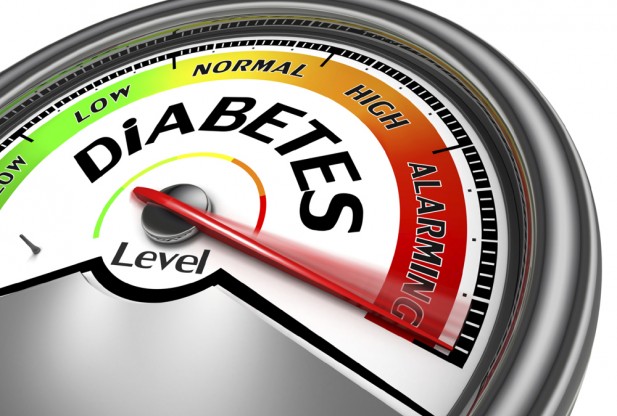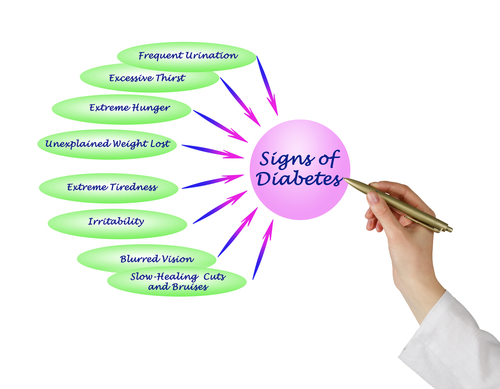The symptomatology of diabetes is more readily recognizable in children than in adults, so it is surprising that the diagnosis may sometimes be missed or delayed, Diabetes is a great imitator: influenza, gastroenteritis, and appendicitis are the conditions more often diagnosed, only to find that the disease was really diabetes. Those families with a strong family history of diabetes should suspect diabetes, especially if there is one child in the family with diabetes. Main manifestations are:
• Polyuria
• Polydipsia
• Polyphagia
• Progressive cachexia
• Glucosuria
• Hyperglycemia
• Increasing of specific gravity of urine
The sequence of chemical events described previously results in hyperglycemia and acidosis, which in turn produce the three “polys” of diabetes- polyphagia, polydipsia, and polyuria- the cardinal symptoms of the disease. In non-insulin-dependent diabetes (which has also been found in older children), the insulin values are found to be overweight, and there is often tiredness and frequent infections (such as monilial infections in females).
The insulin-dependent diabetic has markedly decreased insulin levels and, as diabetes becomes complete, there is no demonstrable, insulin at all. The child may start wetting the bed, become grouchy and “not himself” or act overly tired. Abdominal discomfort is common. Weight loss, though quite observable on the charts, maybe a less frequent presenting complaint because of the fact that the family might not have noticed the change. Another outstanding feature of diabetes is thirst. One couple reported that their child, during a trip from California to Kensas, drank the contents of a gallon jug of water between each gas station stop. At a certain point in the illness the child may actually refuse fluid and food, adding to the increasing state of dehydration and malnutrition. Other symptoms include dry skin, blurred vision, and sores that are slow to heal. More commonly in children, tiredness and bed-wetting are the chief complaints that prompt parents to take their child to the physician. The child may be hyperglycemic, with elevated blood glucose levels and glucose in the Urine; may be in diabetic ketosis, with ketones as well as glucose in the urine but not noticeably dehydrated; may be in diabetic keto-acidosis, with dehydration, electrolyte imbalance and acidosis.
Diagnostic evaluation
Observation and testing are important to the diagnosis of diabetes in children. If children demonstrate glycosuria, are overweight, or exhibit symptoms of hypoglycemia, they are candidates for glucose tolerance testing. The Urine test will show positive glucose only when the disease is actually manifest. The negative urine test does not necessarily rule our early diabetes, nor does a positive test necessarily indicate diabetes. Renal glycosuria, unrelated to diabetes, can result in glucose in the urine.
The fasting blood glucose test may miss the diagnosis of early diabetes and has been known to miss as many as 85% of children who has an abnormal glucose tolerance test with asymptomatic disease. The 4-hour glucose tolerance test has been found to be the most successful test for the diagnosis of early diabetes, whereas the 6-hour glucose tolerance test is more helpful for the diagnosis os hypoglycemia. Based on norms established for normal, non-diabetic children or various ages, the criteria for the diagnosis of early diabetes is two or more abnormal range. However, standardization of food intake before the test may be important and those preparing for the test should emphasize the importance of following the directions for diet supplied by the physician or laboratory. It is difficult to do glucose tolerance testing in children younger than 3 years of age, since norms for children in this age-group have not been established.
Problem of diagnosis
Signs, symptoms and chemical tests may lead to the conclusion that the child has diabetes, when in reality another condition may be present, this is true in salicylate intoxication, which can be ruled our easily by boiling the urine. The acetone, if present, will boil out of the urine, leaving a negative Acetest if related to diabetes and a positive Acetest if related to salicylate intoxication. Temporary hyperalimentation, pancreatitis, and encephalitis. The glucose tests usually return to normal once the stress is reversed; however, insulin may be needed for a short period in the stress illnesses, especially when the child is undergoing hyperalimentation. Other abnormal conditions that may cause glucose to appear in the Urine are certain renal diseases, some other endocrine disorders such as hypercortisolism, and lead encephalopathy.

